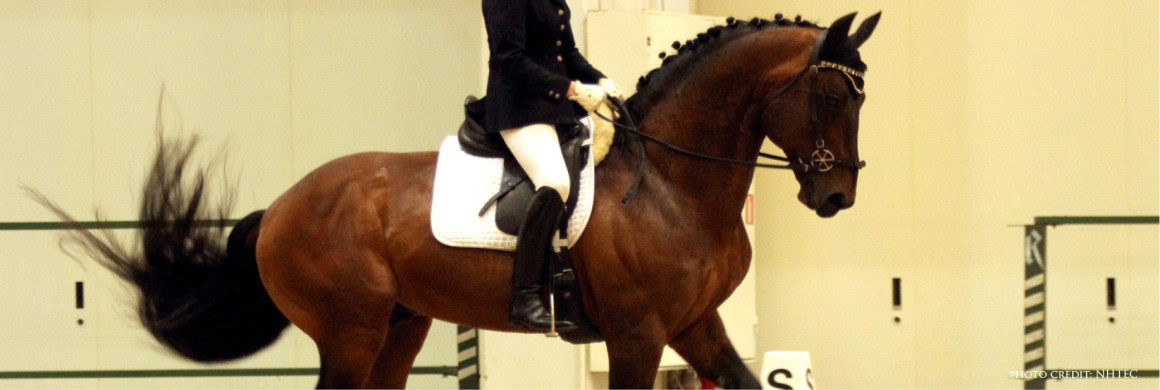Exploring a bitless bridle option for your horse? It’s become more and more common, with technical bridles hitting the market that are a step away from the traditional hackamores that once dominated the shelves. A horse might benefit from a bitless bridle for any number of behavioral or physical problems. These include head-shaking, bolting, tooth grinding, or bone spurs in the mouth. If a bit is causing your horse any sort of pain, you definitely have options.
So what’s out there? Let’s look at a few bitless bridles and how they work.
The Dr. Cook Bitless Bridle uses pressure on the lower part of the horse’s head to guide and slow the horse. In all other appearances a typical English or Western bridle, two cross-over straps cut from the throatlatch to the noseband, sliding through two rings on the noseband so that their movement is free and independent of each other.
Pressure from the right rein becomes pressure on the left side of the horse’s head, encouraging the horse to turn his head (and then body) to the right. Unlike most traditional hackamores, the Dr. Cook bridle utilizes gentle pressure against much of the horse’s head, not just the horse’s jaw. The pressure also complements the body’s aids from leg and seat to come to a halt or to slow the pace, rather than placing strong pressure on the bridge of the nose, making this a gentle approach to bridles. (Learn more at bitlessbridle.com)
Several other companies, such as LightRider Bitless Bridles, offer a bitless bridle with a chinstrap attached to a modified sidepull hackamore. The chinstrap slips through rings on the noseband, and is designed to grow gradually more snug as the reins are pulled back. You’ll find this bridle comes in leather, biothane, or rope styles, making it an option for riders of any discipline.
These chin-strap based bitless bridles can be converted into a sidepull — a hackamore that exerts pressure through the noseband when you pull on the reins. The bridle can also be modified to provide varying levels of pressure from the noseband, depending on the horse’s preference and the level of sensitivity and contact you need from your ride. (Learn more at lightriderbridle.com)
The Nurtural Bitless Bridle takes the above bridles one step further, combining the sidepull action and cheek-pressure. Turning a horse with a Nurtural bridle involves both encouragement to turn the horse’s head (from the ring and noseband), but also pressure pushing the horse’s head in the correct direction (from the cheek strap). The bridle is purposely worn loose so that an instant pressure release provides a reward to the horse. (Learn more at nurturalhorse.com)
Should you move your horse into a bitless bridle? If you’re dealing with training problems that seem related to mouth pain, it might be worth a try. Consult your trainer and your veterinarian first, then be sure that you are comfortable, and in a secure area, before you slowly teach your horse how the new bridle works. Remember that a bridle that suddenly changes pressure in new ways from a traditional bridle can be alarming to your horse, and it will take some time to acclimate them.
Have you used a bitless bridle? Tell us about your experience in the comments!



Just recently bought the most beautiful Fresian.. He’s 6 years old and not well schooled, extremely head shy and a battle to tack him up and get the bit in his mouth.. I bought the crossover bitless bridle and tried it.. Well I never thought it possible.. I had absolutely no trouble tacking him up and riding was an absolute pleasure.. It was well worth it.. Happy horse, happy life..(“,)
Congratulations! We love Fresians, and am so glad to hear of your success. As you develop your relationship and come across educational life moments, please share them.